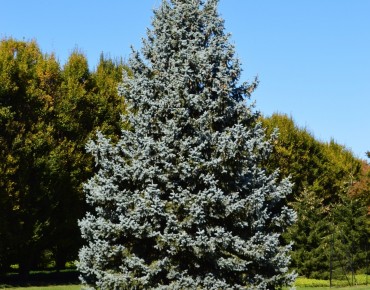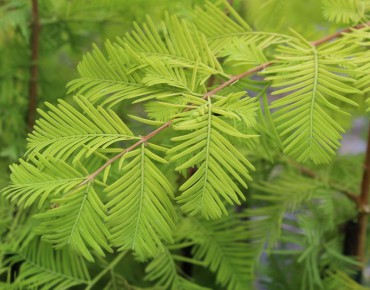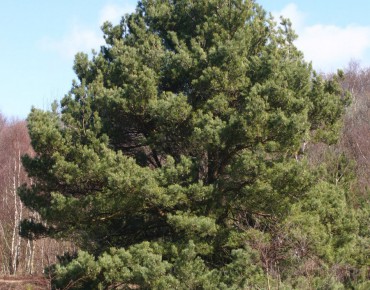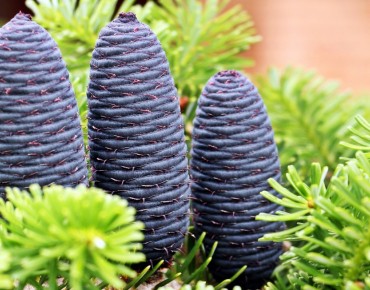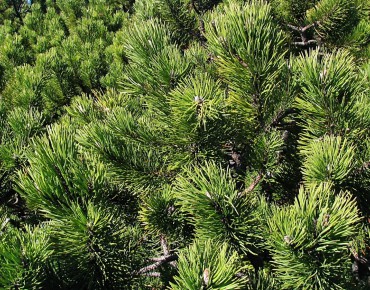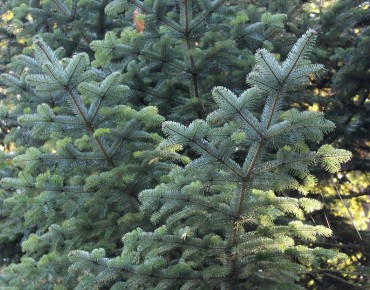- novelty
Douglas fir
Pseudotsuga menziesii
Description
Douglas Fir – Oregon Pine – Pseudotsuga menziesii
Main interest
A large conifer, the Douglas Fir stands out for its rapid growth, slender silhouette, and the exceptional quality of its durable timber. Used both in forestry and ornamental planting, it offers an imposing presence in parks and large gardens. Evergreen, it retains its dark green foliage all year round, providing structure and colour even in winter. Its longevity, hardiness, and ability to adapt to different soils make it a reliable species both for ornamental use and timber production.
Origins and characteristics
Native to the west coast of North America, the Douglas Fir was introduced to Europe in the 19th century. It is now widely planted in French forests. Its name honours the Scottish botanist David Douglas, who brought it to Europe.
It is a large-growing conifer with soft foliage to the touch, a straight, slender trunk, and impressive longevity.
Description and special features
When young, the Douglas Fir has a conical habit, becoming broader and more pyramidal with age. Its evergreen, dark green foliage is slightly fragrant when crushed, releasing a characteristic citrus scent. Young shoots are supple, covered in reddish-brown buds.
- Mature height: 15 to 25 m in gardens (up to 50 m in forests)
- Width: 6 to 10 m
- Growth rate: Fast (up to 1 m/year in ideal conditions)
- Foliage: Evergreen, supple, medium to dark green
- Flowering: March - April
- Cones: Small elongated cones (2 to 3 cm), pendulous, very decorative
Plant characteristics
- Type: Large-growing conifer
- Family: Pinaceae
- Hardiness: Excellent (down to -30 °C)
- Habit: Conical, slender
- Lifespan: Over 500 years in natural conditions
Flowering and fruiting
Flowering is discreet in spring, followed by the formation of pendulous cones, characteristic of the genus. These cones, with their curved scales and protruding bracts, are an interesting decorative feature in autumn and winter.
Exposure and Soil
- Exposure: Full sun or partial shade
- Soil: Deep, fresh, and well-drained. Tolerates slightly acidic to neutral soils
- Does not tolerate very dry or chalky soils
Planting
Plant in autumn or spring, avoiding periods of frost or extreme heat.
Choose an open location, set back from buildings, as the Douglas fir reaches a considerable size at maturity.
- Loosen the soil thoroughly and mix in compost or forest humus
- Water generously after planting
Watering
- Water regularly during the first year, especially in dry summer conditions
- Once established, it is self‑sufficient except during prolonged drought
Pruning
- No pruning required – the natural habit is harmonious
- Remove lower branches if necessary as the tree grows taller
Propagation
- By seed (a forestry technique)
- Rarely used in gardens – potted young plants are preferred for planting
Garden uses
The Douglas fir is ideal for:
- Afforesting large areas or managed woodland
- Large-scale windbreak hedges
- Natural visual screens
- Collections of remarkable trees or conifers
It can also be used as a living Christmas tree if pruned when young, although it does not tolerate long-term container culture well.
Protection from diseases
- Resistant when grown in suitable soil conditions
- May be susceptible to certain wood‑rotting fungi if exposed to prolonged waterlogging
- Rarely attacked by pests in temperate climates
Tips for good growth
- Select a deep, fresh soil to encourage rapid growth
- Mulch around the base during the first few years to help retain moisture
- Avoid planting too close to other trees – it needs space to develop fully
- Choose the planting location with its mature size in mind
The Douglas fir is a noble, powerful conifer, perfect for those wishing to structure a large garden, create a natural screen, or simply welcome a forest giant onto their land. Easy‑going and undemanding once established, it will provide a majestic presence for decades.
Features
- Common name : Douglas fir - Oregon pine
- Family : pinaceae
- Category : conifers
- Spread : 6 to 10 m
- Foliage : evergreen
- Fruit : Small, elongated cones (2 to 3 cm), hanging, very decorative
- Use : isolated - shrubberry - alignment
- Soil : slightly acidic
- Habit : pyramidal
- Enemies : nothing to report
- Possible diseases : resistant to diseases
- Reproduction : monoecious
Expédition & livraison
How does the delivery work?
 As soon as you place your order your plants are selected
As soon as you place your order your plants are selected Each order is processed individually.
Each order is processed individually. Plants are packed, staked and labeled.
Plants are packed, staked and labeled. Packaging is carefully implemented to avoid any problems.
Packaging is carefully implemented to avoid any problems. Packages are ready to be shipped.
Packages are ready to be shipped.
Our delivery methods
Shipping of our plants throughout Europe (except overseas and islands).
Customer reviews










